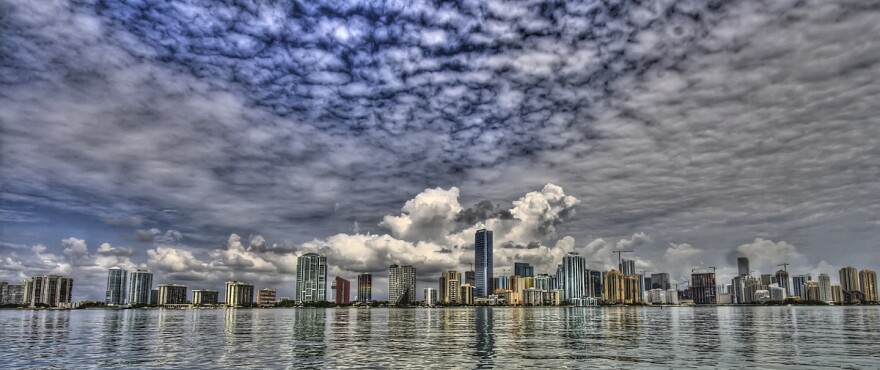As an undergrad at Louisiana State University, I learned quickly what it means to live in a swamp. I left our college newsroom after an all-nighter working a tropical storm and found my car parked behind Tiger Stadium — filled to the stickshift with murky brown water.
Four years later, I came to live in another swamp just in time to work a devastating hurricane season. Katrina skipped across my new home in South Florida, grew into a monster in the Gulf of Mexico and decimated New Orleans. Then came Wilma, a boomerang of storm that swept into the Gulf and curled back to leave a million Floridians — and me — in dank heat and darkness for weeks and without clean water for days.
Still, I remain drawn to the sticky places where the land seeps into the sea. I love the Miami heat (and, yes, Heat), the storms, the endless golden marshland and gray-green cypress groves. I have found that the best surprises, weirdness, music, food, parties, even reptiles, tend to grow in swamps. To live in America’s wetlands is to intimately understand both the joy and the suffering of water.
An article in Rolling Stone recently resurrected the old inconvenient truth that any Miamian attuned to weather, water and our little spit of land thrust into the middle of it knows in his or her bones. We will be among the first cities lost to climate change. New Orleans, a city that’s technically been underwater for decades, is probably fighting us for the title of America’s premiere flood zone.
I imagine that the rest of the country reads these dire predictions and shrugs at the enormity and the hopelessness of it all. Why should we care? What can we do anyway?
I’ll admit that I love these places, perhaps irrationally, and I think everyone should. I visit New Orleans annually, and would live there had I not made my life in Miami. New Orleanians and Miamians relish living in places so different from the rest of America. (We also delight in thumbing our noses at America’s grander cities.) Yet, both are built on the most quintessential American narrative.
We are the last frontier towns —shaped by great waves of immigration, booms and busts and the collisions of very different people and ideas. Other cities, bigger cities, revel in being “melting pots,” we prefer to think of ourselves as arroz con pollo or jambalaya — a steaming mish-mash of different ingredients that is something wholly unique. We don’t assimilate, and that’s what makes us great. We’re disruptors. We’re outsiders. We’re survivors.
Our sinking cities share an ethos of constant reinvention, constant rebuilding. Since Katrina, New Orleanians have shaped their city into a haven for innovation and entrepreneurship with an eye attuned to environmentalism. Miamians are working toward a similar renaissance.
Outsiders and survivors don’t wait for heroes, we become them. We’re setting the standards for redevelopment. We’re fighting for better transit and cleaner water and we’re DIYing small-scale improvements too. Citizens once apathetic to bureaucracy and corruption that flourished in our fair swamps are demanding reform and transparency.
Yes, it still may be too little, too late. But here on the front lines, a new generation of social entrepreneurs is flourishing and recreating our cities once again. We believe we’re working toward a better future, and not just for our own sake.
The waters will rise, and if we let our cities drown, we’re ceding far more than Mardi Gras and South Beach. Miami and New Orleans are harbingers of what will come for other cities — New York, the Bay Area, D.C., L.A., Chicago, Boston — all will lose ground to water as sea level rises.
Now is a time for outsiders, for disruptors, for survivors. Radical, innovative environmental and political efforts in cities on the verge of disaster, cities like Miami and New Orleans, are America’s best hope for discovering practical ways forward.
We know it, and we’re working on it. Here in Miami, scientists say we may have as little as 15 years to turn the tide. We’re staying here to try — come hell and high water.
This item was reposted with permission from Medium. Rebekah Monson is an editor at the University of Miami College of Arts & Sciences. Find her on Twitter here.





